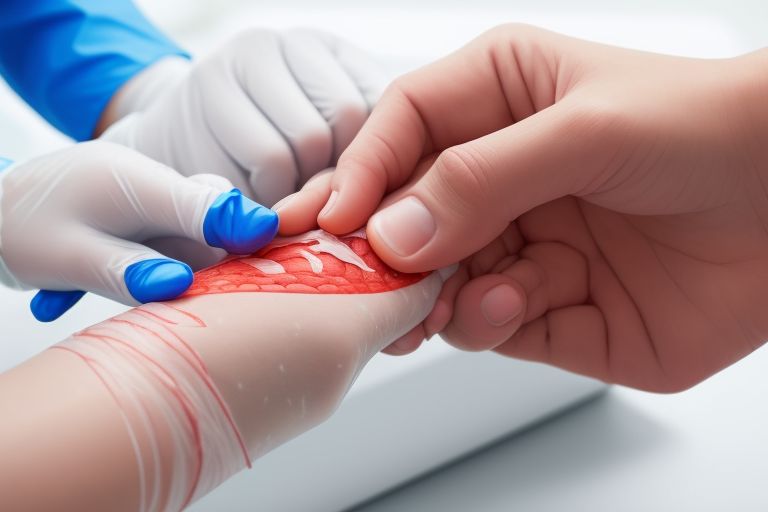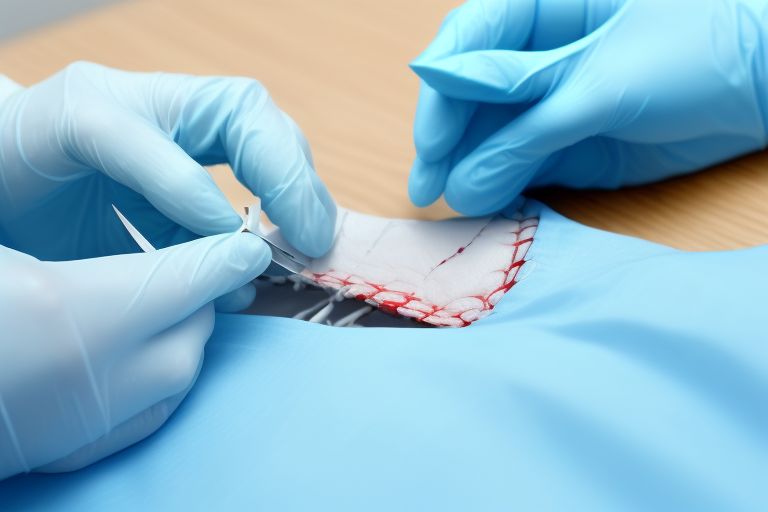Accidents happen all the time, and when they do, you might wonder, “Does urgent care do stitches?” Maybe you cut yourself while cooking, or your child got hurt on the playground. In these moments, knowing where to go for treatment is important.
Does urgent care do stitches, or do you need to visit the emergency room? The answer depends on the severity of your cut. Most urgent care centers can provide stitches for minor to moderate cuts. However, for very deep wounds or severe bleeding, the ER might be the better option. Let’s explore when you need stitches, how urgent care can help, and what to expect during your visit.
- Does Urgent Care Do Stitches? Here’s What You Need to Know
- How to Tell If Your Cut Needs Stitches
- Deep or Long Cuts: When Should You Go to Urgent Care?
- Emergency Room vs. Urgent Care: Where Should You Go for Stitches?
- How Stitches Help Your Wound Heal Faster and Safer
- Step-by-Step: What Happens When You Get Stitches at Urgent Care?
- How to Care for Stitches and Heal Properly
- Conclusion
- FAQs
Does Urgent Care Do Stitches? Here’s What You Need to Know
Urgent care clinics can treat many injuries, including cuts and lacerations. If your wound needs stitches, they can help quickly.
Most urgent care centers have trained doctors who can stitch wounds safely. They will clean the cut, use numbing medicine, and close the wound with stitches. This helps in faster healing and lowers the risk of infection.
If you have a minor to moderate cut, urgent care is a good option. It is faster and cheaper than going to an emergency room. But if your wound is very deep or has heavy bleeding, you should go to the ER.

How to Tell If Your Cut Needs Stitches
Not all cuts need stitches, but some do. Knowing when to get stitches is important for proper healing.
Here are signs that your cut may need stitches:
- It is deep enough to see fat, muscle, or bone.
- The bleeding does not stop after 10-15 minutes.
- It is longer than half an inch.
- The edges of the cut are wide open or jagged.
- It is on the face, hand, or joint and may affect movement.
If you are unsure, it is best to visit urgent care. A doctor can check your wound and decide if stitches are needed.
Deep or Long Cuts: When Should You Go to Urgent Care?
Some wounds are small and heal on their own. Others need medical care to prevent infection and help healing.
If a cut is longer than half an inch, urgent care can help. They will clean the wound and stitch it to close the skin. This helps in reducing scarring and speeds up healing.
Urgent care is also a good choice if the cut is on the hands, feet, or face. These areas move a lot, and stitches prevent the wound from reopening. Getting stitches early can stop complications.
Emergency Room vs. Urgent Care: Where Should You Go for Stitches?
Choosing between urgent care and the ER depends on the severity of your wound.
Visit urgent care if:
- The cut is deep but not too severe.
- The bleeding slows down after applying pressure.
- The wound is clean and has no debris.
Go to the ER if:
- The bleeding does not stop after 15 minutes.
- The cut is extremely deep and shows bone or tendons.
- The wound is from an animal bite or rusty object.
Urgent care is a quick and affordable option for most cuts. But in life-threatening situations, always choose the ER.
How Stitches Help Your Wound Heal Faster and Safer
Stitches bring the edges of a wound together, helping it close properly. This speeds up healing and prevents infection.
When a wound is stitched, it reduces the chance of bacteria getting inside. It also lowers the risk of scarring, especially on the face and hands.
Without stitches, deep cuts take longer to heal. The wound may stay open, leading to more pain and infection. Stitches are the best way to protect the wound and help the skin heal properly.
Step-by-Step: What Happens When You Get Stitches at Urgent Care?
If you need stitches, urgent care makes the process simple and fast.
Here’s what to expect:
- Cleaning the Wound – The doctor will wash the cut to remove dirt and bacteria.
- Numbing the Area – A local anesthetic will be used to reduce pain.
- Stitching the Wound – The doctor will carefully sew the wound shut.
- Covering the Cut – A bandage will be placed to protect the stitches.
- Aftercare Instructions – You will get tips on keeping the stitches clean and when to return for removal if needed.
Urgent care makes the process easy and comfortable, helping you heal quickly.
How to Care for Stitches and Heal Properly
Taking care of stitches is important for fast healing and avoiding infection.
Follow these tips:
- Keep the stitches dry for the first 24-48 hours.
- Clean the area with mild soap and warm water.
- Change dressings regularly as advised by your doctor.
- Avoid pulling or stretching the stitched area.
- Watch for signs of infection like swelling, pain, or pus.
Proper care helps stitches heal faster and prevents scarring.

Conclusion
Getting stitches is sometimes necessary for proper healing. Does urgent care do stitches? Yes, they can help with minor to moderate cuts. Urgent care is fast, affordable, and convenient for treating wounds that need stitching.
If you are unsure whether your cut needs stitches, visit urgent care. Doctors there will assess your wound and give the right treatment. Taking quick action ensures better healing and prevents complications.
FAQs
Q: Does urgent care do stitches for deep cuts?
A: Yes, urgent care can stitch deep cuts, but very severe wounds may need ER care.
Q: How long do stitches stay in before removal?
A: Stitches usually stay in for 7-14 days, depending on the wound’s location and healing process.
Q: Will getting stitches at urgent care cost less than an ER visit?
A: Yes, urgent care is often more affordable than the ER for minor to moderate wounds.